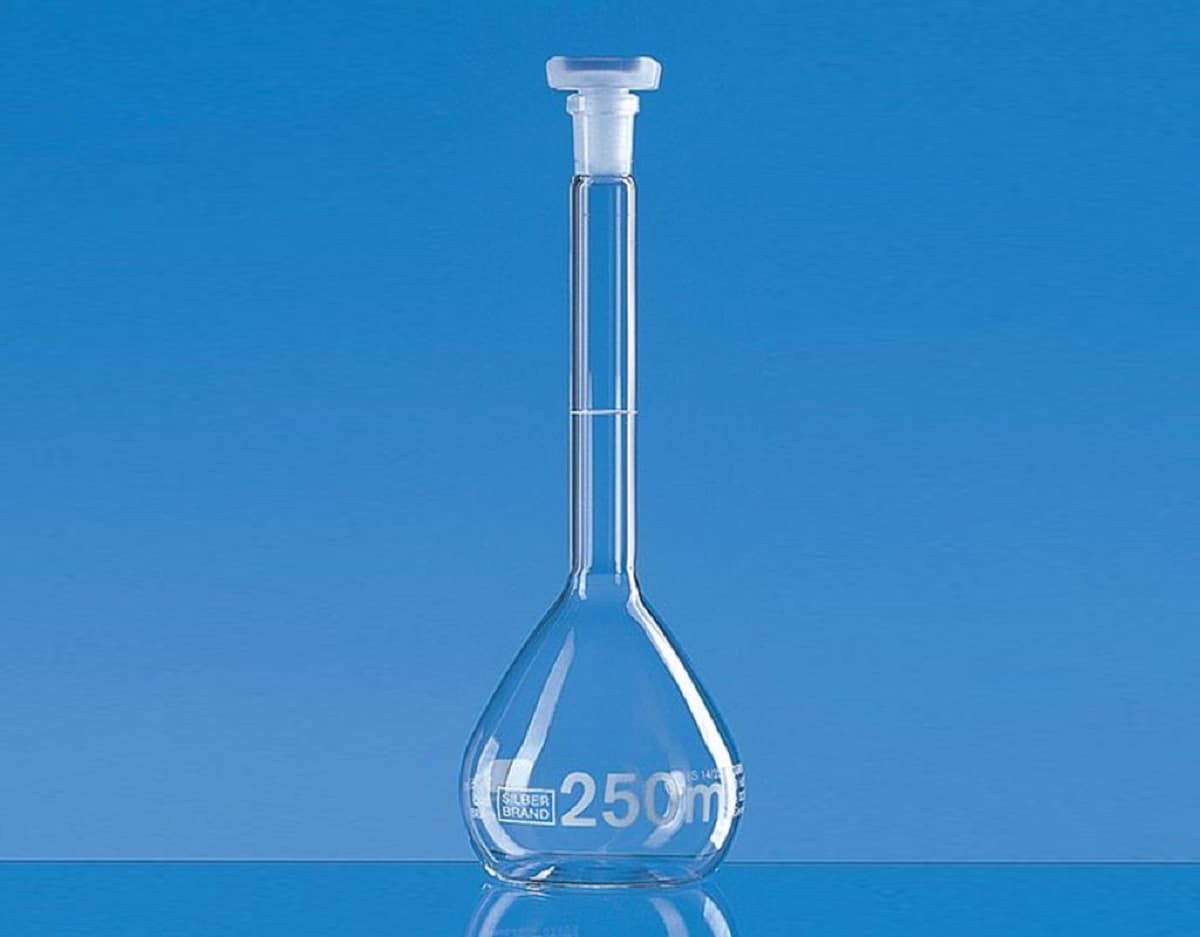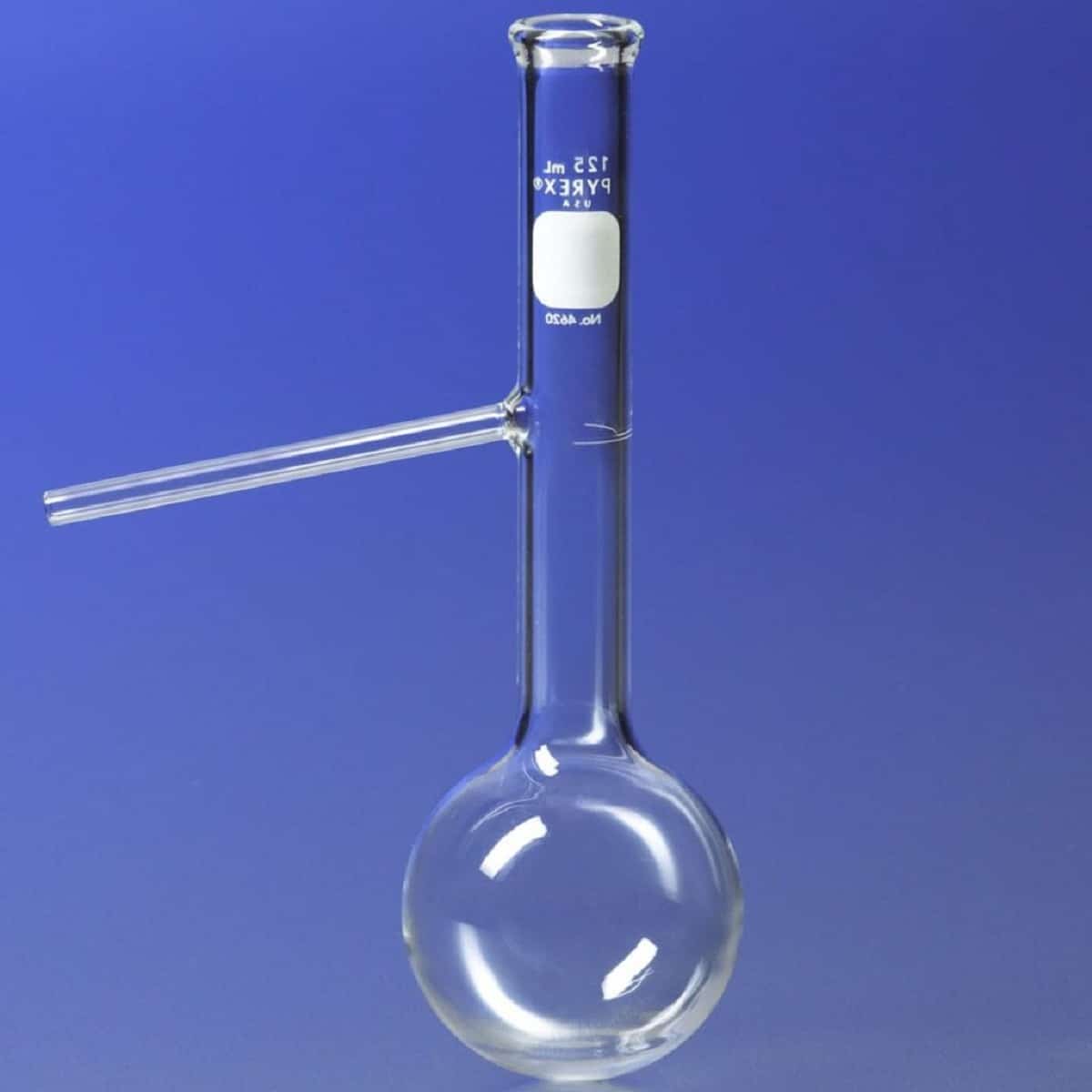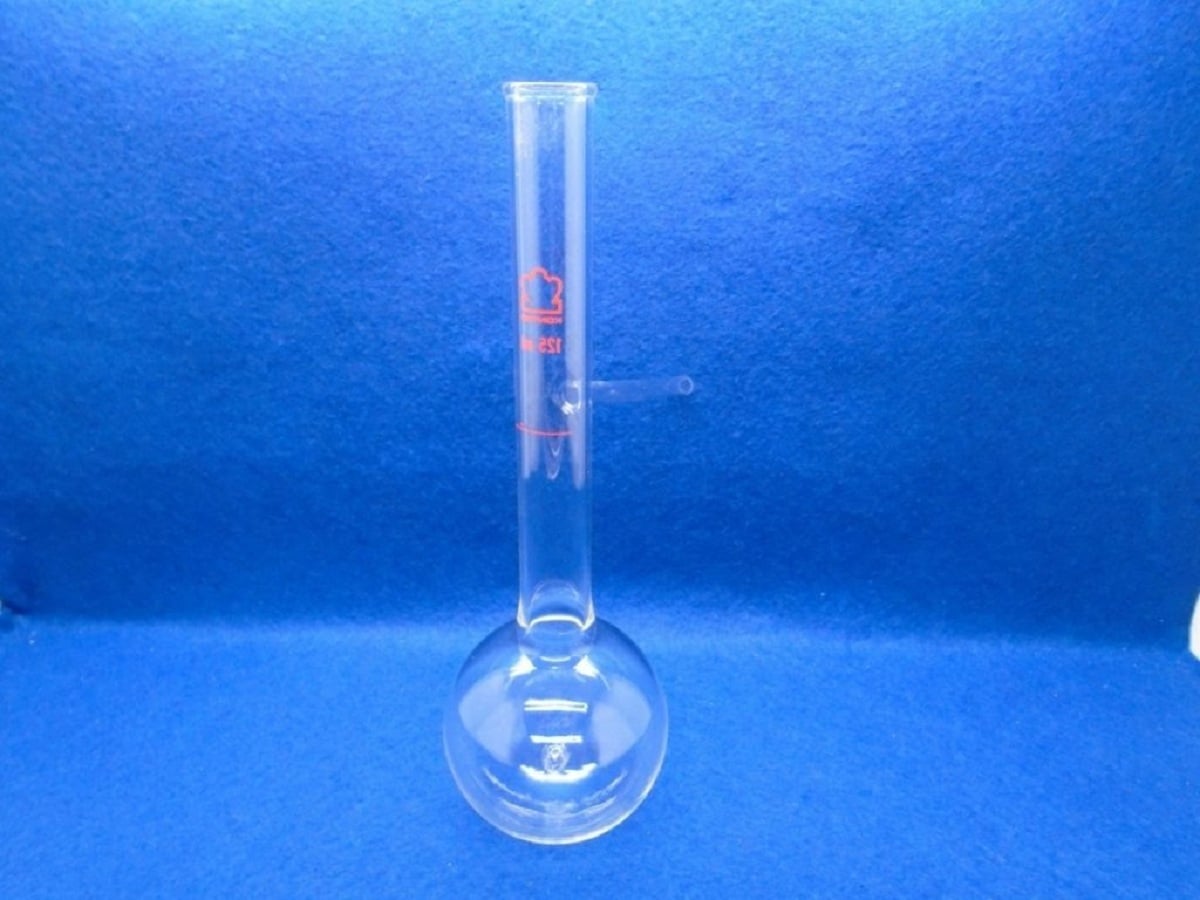
When we are in a laboratory we use certain instruments that help us to carry out measurements and tests. One of the most widely used instruments that was a significant achievement in the world of chemistry and physics is the volumetric flask. It is a very useful tool both for the advancement and for the discovery of many scientific studies. By helping to accurately calculate the volumes of liquids that can be measured, it has become one of the most widely used tools.
In this article we are going to tell you all the characteristics, importance and how to use the volumetric flask.
What is a volumetric flask

It is also known by the name of Fiola and it is nothing more than a glass container used in laboratories. Thanks to this tool, exact measurements of liquid levels can be obtained and it is used to mix materials that are going to be used later. The most normal thing is that it is made of glass and has an elongated and narrow neck. Its bottom is completely flat. On the neck there is a mark known as gauging, hence its name. The capacity is in charge of indicating the volume of liquid that the volumetric flask must contain in order to guarantee and facilitate the exact measurement. In this way, very similar measurements are achieved with a smaller margin of error.
The neck marking starts from the pear-shaped base and runs across the narrow neck. In this way, it is possible to provide different types of volume measurements.
What is it for

The volumetric flask is used to accurately measure different volumes of liquids that can be found in a laboratory. They can be used to make some mixes of various elements and achieve a composition without overloading its function. Keep in mind that many flasks are only suitable for use in school laboratories. These flasks tend to have some more basic features and are more delicate. However, in official laboratories there are other types of more elaborate flasks that have different compositions and support a greater capacity.
The most important thing before buying a volumetric flask is to know what it is going to be used for. In this way, we are able to choose the most suitable model depending on the use that is going to be given to it. The operation is simple. It is only necessary to know which brands are needed in order to obtain an accurate measurement. This measurement can be of a volume of a liquid or a mixture of them. The main function of a volumetric flask is to measure the volume of the liquid that any laboratory uses. It can also be used for any type of test or experiment.
The most important step to know when using a volumetric flask is to make up to the mark. To make up is to fill the volumetric flask in the correct way. To do this, it is best to use a funnel because it has a more delegated peak. As it is a delicate and elongated peak, it is easier to place the liquid inside the volumetric flask. Thanks to this, we achieve better precision since we run less risk of a spill. It will also help us to have a more accurate measurement and greater comfort in the process.
Another point to take into account when we use a volumetric flask is the moment at which we must carry out the measurement. You have to focus on the central point of the curve that achieves the solution. We must take into account that many flasks have high edges and others that have lower edges. In any case, the important thing is that we must always keep an eye on the capacity. This is the only way to be able to control well the center point of the solution curve. We must look at the capacity as a straight line in order to guarantee the precise calculation of the liquid. It cannot be seen as an ellipse or we will not have the result we expect.
Uses of the volumetric flask
It is not only used to measure the volume of a liquid, but also to make different mixtures. We are going to divide the different uses of the volumetric flask:
- Measure volume of liquids: Note the marks on the neck of the flask as a guide. Thanks to them, we can measure the volume of the liquid by observing a curve either up or down.
- Prepare solutions: this type of flask also serves to prepare solutions. If we know the amount of solute and solvent, we can mix the amount we need. The weight of the solute is determined through a balance. The stopper is then placed on the volumetric flask and shaken until all the components are integrated without running the risk of the solution spilling.
Volumetric flask types

There are different types of volumetric flask according to some characteristics. Let's analyze what they are:
- According to the precision: We have volumetric flasks of type A that are used for measuring liquids and preparing different mixtures. They are used in advanced chemistry laboratories. Volumetric flasks type B are those found in school laboratories with lower demands.
- According to the volume capacity: When it comes to the volume capacity of a volumetric flask, we do not refer to 1 and 2 ml flasks, although those ranging from 25 ml to 500 ml are usually used.
- According to the color: Depending on what material this is done, you can find different colors. Some have a necessary color to be able to process mixtures that are sensitive to light. Keep in mind that they must have good hygiene for any type of measure. If you do not have good hygiene, the measurements can be affected and altered.
As you can see, the volumetric flask is one of the most widely used tools in the world of chemistry and physics and laboratories. I hope that with this information you can learn more about the volumetric flask and its main characteristics.